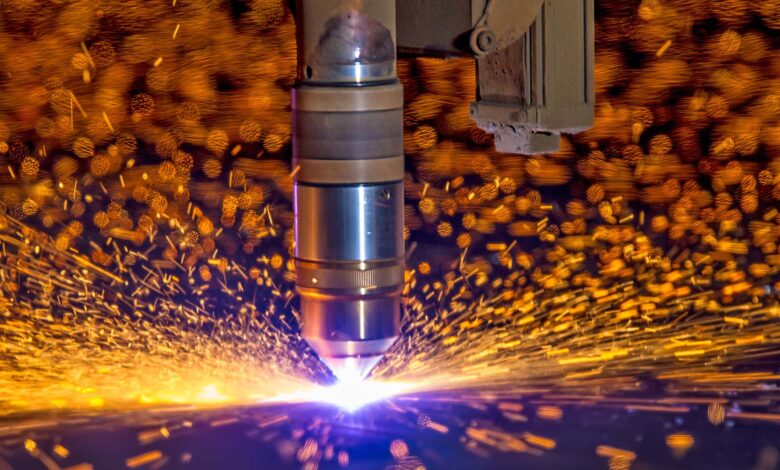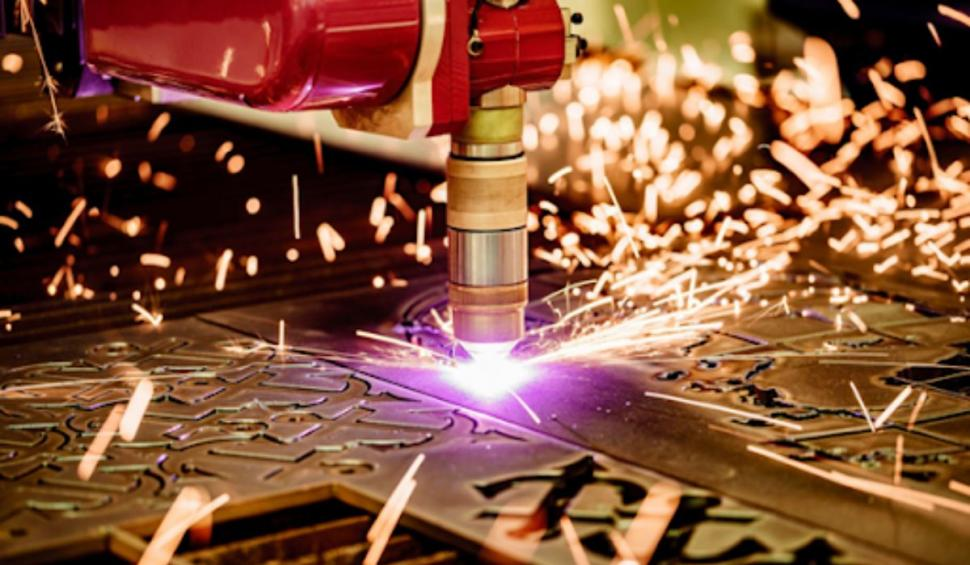
For years, metal fabrication has relied on methods that were either fast or accurate, but rarely both. Plasma technology has changed that. Known for its ability to cut through metal at high speeds while maintaining precision, plasma cutting is helping manufacturers meet increasing demands for efficiency.
Whether working with thick steel or intricate metal designs, plasma technology offers a versatile and effective solution. As industries seek ways to reduce costs and increase productivity, it stands out as the technology driving progress in modern metal fabrication.
That’s what we will explore in this article. So, without further ado, let’s dive right in!

What Is Plasma Technology?
Plasma cutting isn’t new, but it’s rapidly becoming the go-to solution for industries that need quick, clean cuts on tough materials. There are several things that make this technology more in-demand procedure.
High-speed cutting: Plasma technology uses electrically conductive gas to create a plasma arc, melting the metal at the point of the cut. This process is not only faster than traditional methods but also highly precise.
Versatility: Whether you’re working with steel, aluminum, or copper, this can handle a wide variety of metals, making it useful in industries like construction, automotive, and aerospace.
Speed and Accuracy: The Winning Combo
When it comes to balancing speed and accuracy, plasma technology leads the way. Traditional methods like oxy-fuel or mechanical cutting often struggle with thicker metals or intricate designs, but plasma technology cutting excels in both areas.
Why Choose Plasma Cutting?
Fast cuts without losing precision: Plasma cutting can handle both thin and thick metals with the same level of accuracy.
Minimal finishing work: Since the cuts are cleaner and smoother, there’s less need for additional processing.
This means less downtime, faster project completion, and, ultimately, higher productivity.
Reliable Sources for Plasma Cutting Solutions
Plasma Cutting equipment is crucial for businesses that want to optimize their metal fabrication processes. Choosing reliable sources ensures you have access to the latest tools designed to meet the demands of high-speed production with precision.
Whether you need equipment for small-scale projects or fully automated systems for large operations, working with trusted providers ensures that your plasma technology investment delivers long-term value and efficiency.
The Versatility of Plasma Cutting
One of the major advantages of plasma technology is its flexibility. It’s not just fast – it’s also adaptable to various materials and setups. Here’s how it stands out:
Works on different metals: Steel, stainless steel, aluminum, brass, and copper are just some of the materials you can cut with this.
Suited for both manual and automated setups: Whether you need hand-held cutting for smaller jobs or automated CNC plasma systems for large-scale projects, plasma technology has you covered.
This makes it a great option across industries, allowing businesses to get the most out of their cutting process.
Productivity Boost: Why Plasma Technology Is More Efficient
In today’s fast-paced manufacturing environment, maximizing efficiency is key. Plasma technology helps businesses reduce downtime and boost productivity in several ways:
Quicker processing times: Faster cutting speeds mean more parts can be produced in less time.
Reduced post-processing: With cleaner cuts, there’s less need for additional refinement, which saves both time and resources.
This all adds up to a smoother workflow that allows businesses to deliver faster without sacrificing quality.
Cost-Effective Solutions
While there might be upfront costs involved in switching to thermal cutting technology, the long-term savings make it a smart investment. Here’s why:
Lower material waste: Precise cuts lead to less scrap material.
Reduced labor costs: Automation options mean fewer manual tasks, which cuts down on labor costs.
Faster turnaround times: The speed of plasma technology cutting allows for quicker project completion, improving overall efficiency.
In a competitive industry, plasma technology offers a cost-effective way to stay ahead without compromising on quality or accuracy.
Looking Ahead: The Future of Plasma Technology

Plasma technology is evolving quickly, with innovations focusing on making the process even faster and more energy-efficient. Some potential developments to look out for include:
Integration with AI and robotics: Plasma technology may soon work alongside advanced technologies, further automating the process and improving precision.
Energy efficiency: As technology advances, we can expect thermal cutting systems to become even more environmentally friendly, helping businesses reduce energy consumption.
The future of metal fabrication is clear: businesses that embrace plasma technology will benefit from faster production, cleaner cuts, and lower costs—setting the standard for the industry.
Summing It Up
Plasma technology is rapidly advancing, bringing new business opportunities across various industries. Its ability to adapt to different applications, combined with its precision and efficiency, makes it a valuable asset for modern metal fabrication. As this technology continues to evolve, it’s likely to play an even bigger role in shaping the future of manufacturing. By staying informed about the latest developments, you can remain competitive and well-prepared for the demands of an ever-changing market.



